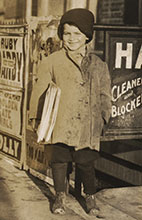
Bridge of Scarlet Leaves
Discussion Guide
- The title Bridge of Scarlet Leaves was inspired by an ancient haiku. Describe the symbolism of leaves in the story and possible reasons they would be scarlet. What thoughts and/or emotions did the opening poem (by Deanna Nikaido) evoke both before and after you read the book?
- Bridge conveys a variety of meanings in McMorris's novel, many of which relate to connecting hearts, people, and cultures. How did each major character fulfill the role of a bridge? Who or what do you view as the most significant bridge in the story?
- In the 1940s, interracial marriage was illegal in more than thirty American states. Given expectations placed on Caucasian females during this conservative era, how do you feel about Maddie's hesitation early in her relationship with Lane? Would you have made the same daring choices that she did over the course of the war?
- Several of the characters' lives often parallel throughout the story. Discuss such instances found in TJ's military training and tour, Lane's and Maddie's Manzanar experiences, Mrs. Duchovny's tragedy, and Dopey's assignment to the POW camp.
- While working at the camo-net factory, Lane ponders the irony: "Here they were, unjustly imprisoned by their own country, contributing to the fight for freedom and democracy." In Lane's situation, would you have enlisted in the U.S. military? If drafted, would you have refused to serve?
- Japanese honor is a major element in the book, as exemplified by Lane's confrontation with the sõchõ, Happy's ceremonial sacrifice, and the Japanese Americans' general compliance to evacuate. One could say it's a privilege lost by standing out from the group. Discuss how the concept of honor—as a burden versus a reward—contrasts between the Japanese and American cultures.
- The final scene of Maddie sitting at her vanity creates an echo of the book's opening scene, her reflection having vastly changed. In fact, every character experienced a tremendous amount of growth. Of them all, who do you believe transformed the most? Whose journey was your favorite?
- A great number of historical facts and events, along with cultural tidbits, are woven through the pages. What was the most surprising or intriguing piece of information you learned?
- Translations of the names Suzume and Orochi are included in the story. Other names that bear meaning are: Tomo ("friend"), Takeshi ("warrior"), Kumiko ("longtime beautiful child"), Nobu ("faith"), and Kensho ("self-realization, awakening"). To what extent do these names fit the characters?
- Often the key to empathy lies in uncovering traumatic events that have shaped another person's life. Did your impression of Kumiko change once she revealed her past? Have you ever encountered a similar situation in which a discovery altered your perspective of a person?
- At what point in the story do you believe Lane and Maddie's relationship truly became love? Do you believe Maddie regrets her choices? Reflecting on your own life, if you had foreseen the path ahead, would you have made the same decisions? Are you glad you didn't know beforehand?
- In writing, Lane explains to Maddie that he had asked Dewey to throw away a previous letter. How do you think the discarded message differed from the one Lane ultimately sent?
- Do you wish the story had ended differently for any of the characters? If so, how would that have affected the growth of the others? How do you feel about Dopey's decision after the war? Do you agree with Maddie's choice of placing a keepsake on the floating lantern?
- Adhering to Kumiko's superstitions, the book is divided into seven parts to incite good fortune, just as the following bonus question effectively prevents this list from ending on #13: Which two minor characters from McMorris's debut novel, Letters from Home, make a cameo in Bridge of Scarlet Leaves?


